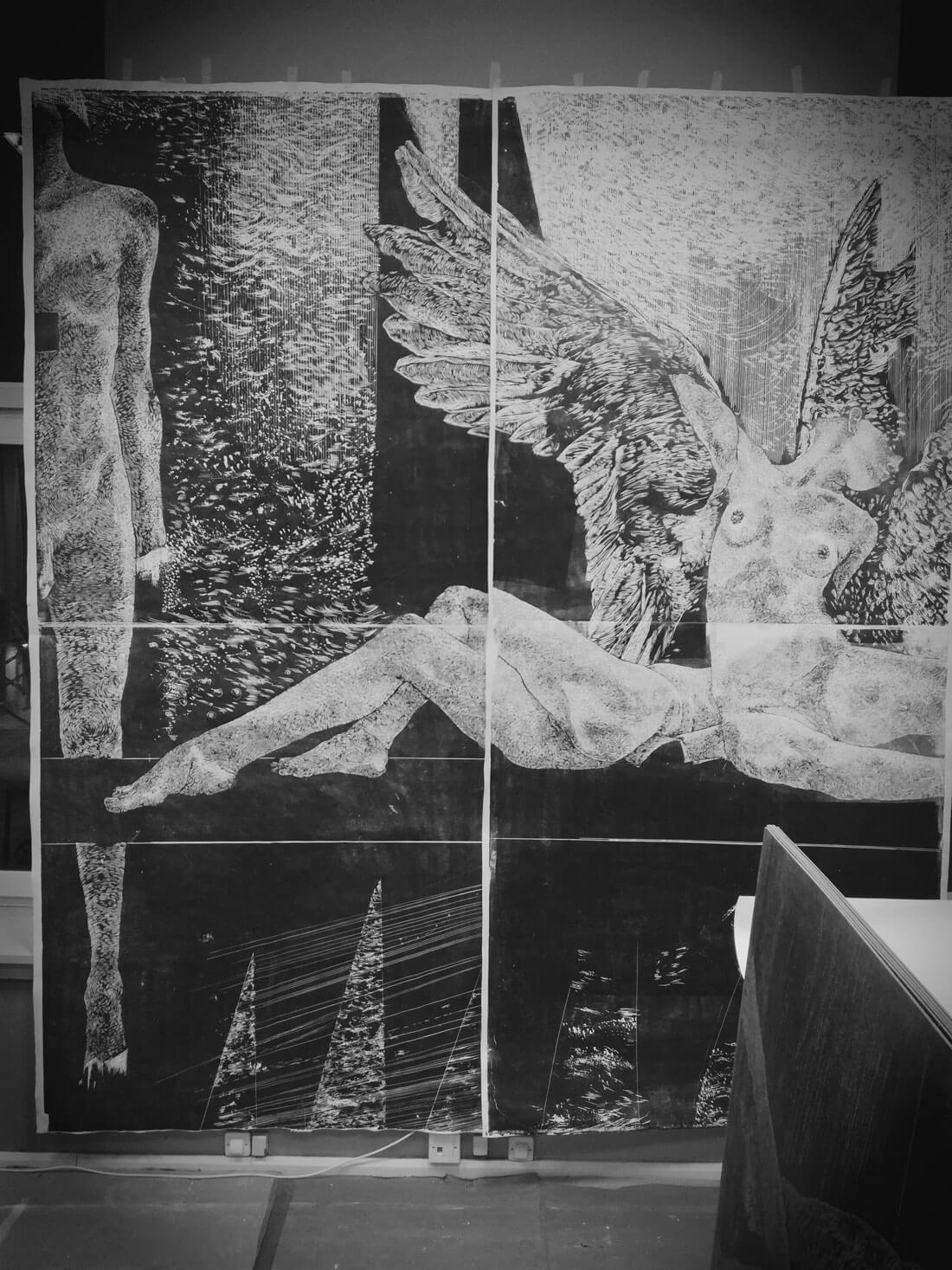I have been working on Nibiru, The Last Supper for the past two years. This artwork combines plaster relief print and woodcut techniques, making it the largest and most ambitious project of my artistic career.
Creating the artwork required extensive materials and effort: over 150 liters of denaturant, 10 meters of jute, 70 meters of cotton paper, and 550 kilograms of ceramic gypsum. The project was not only large in scale but also a significant investment of time and resources.

Concept and Sketching
The project began with sketches in my sketchbook, exploring the essential and semantic concepts behind the work. I refined the composition over months, progressing from sketches to photographic sessions with models, creating photo collages, and finally drawing the final project using a graphic tablet.

Creating the Gypsum Plates
With the project design finalized, I began molding gypsum plates, a process that took over two months. Despite reinforcing them with extra layers of jute, the plates often cracked and broke, requiring careful handling. Once dry, I started cutting the drawings into the plates, continuously adjusting the design throughout the process.

Chemical Hardening and Matrix Preparation
The next step involved hardening the gypsum matrices with a homemade glue made from synthetic rosin dissolved in denaturant. Due to harsh winter conditions, drying took months, sometimes applying glue for three hours per day at -18°C. Despite the challenges, the process ensured durable and high-quality matrices for printing.

First Prints and Woodcut Layers
After months of preparation, I applied a thin layer of offset black ink to the matrices and saw the first visual results. Perfecting the matrices took another six months, during which I produced test prints to control the process.


280 x 840 cm, 2017
Finally, I added woodcut layers, spending the last two months on the complex printing process. Each print is similar yet unique, reflecting the inherent nature of large-scale printmaking.
Creating Nibiru, The Last Supper was an intense, laborious, and rewarding journey, resulting in a piece that showcases both technical skill and artistic vision.
